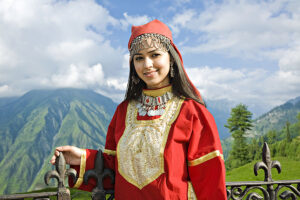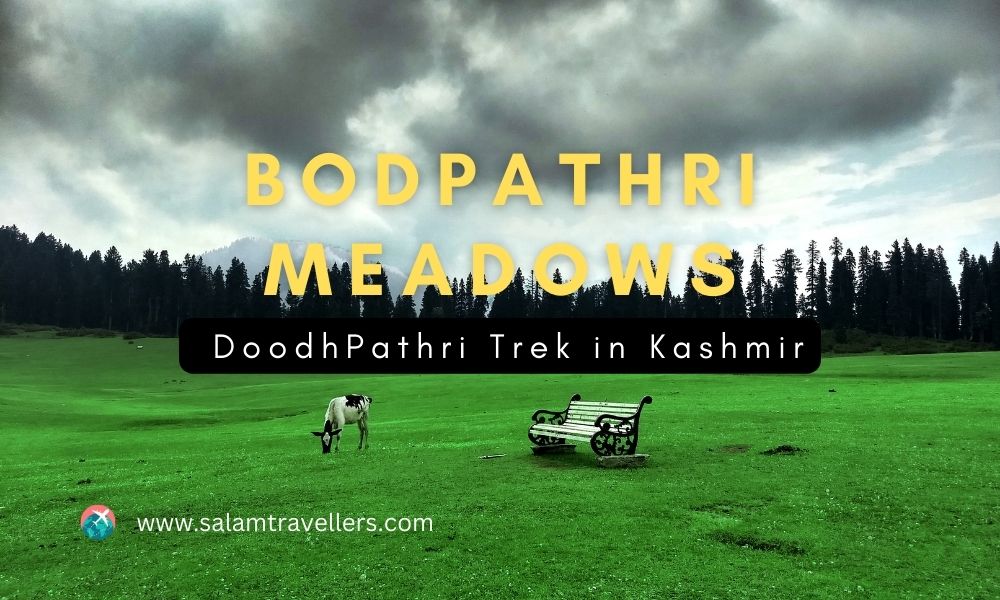
This summer, immerse yourself in the breathtaking beauty of the meadows, surrounded by snow-capped mountains and vibrant wildflowers. Don’t miss the opportunity to witness the stunning sunrise and sunset views at Bodpathri Meadows and the Doodhpathri Trek in Kashmir.
Trekking in Kashmir has a long and storied history, with adventurers exploring the region’s soaring peaks and flower-filled meadows for over a century. One of the most popular treks is to the alpine Bodpathri Meadows, located in the Pir Panjal range at an elevation of 3,300 meters (10,800 feet).
The meadows provide a scenic backdrop for a moderate two-day trek that combines the best of Kashmiri landscapes. Alpine flowers carpet the grassy clearings in summer, while forests of pine and deodar trees offer shade along the trail. The panoramic summit views of the Harmukh range are an iconic reward for hikers reaching the top. With its idyllic setting and diverse terrain, it’s no wonder Bodpathri has become a treasured destination for trekkers seeking adventure in Kashmir.
Also read: 8 Top Offbeat Places in Kashmir in Summer
Location and Geography
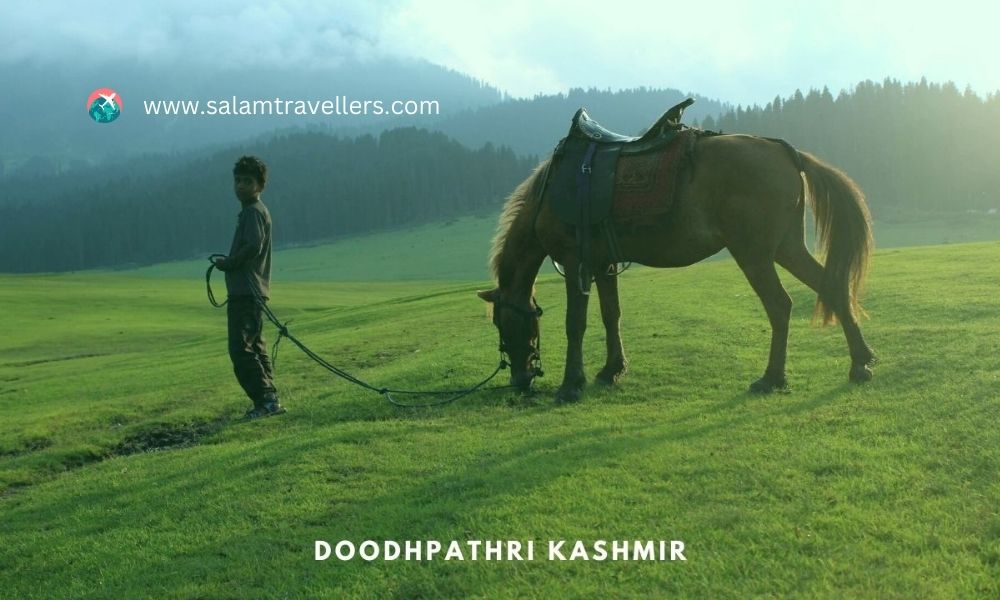
Bodpathri Meadows is located in the Pir Panjal range in the western Himalayas, in the Shopian district of Jammu and Kashmir. It sits at an altitude of 3,300 meters above sea level, nestled between lush green meadows and snow-capped mountains.
The trek to Bodpathri Meadows starts from the village of Aru, which is located just 11 km from the popular hill station of Pahalgam. Aru acts as the base camp for the trek into the high-altitude meadows. From Aru, the trail gradually ascends through pine forests and along gushing streams to reach Bodpathri Meadows after 6-7 hours of hiking.
Geographically, Bodpathri Meadows is situated right next to the Tarsar Lake, a high-altitude alpine lake that is also a popular trekking destination in Kashmir. The water of the lake is somewhat milky in color, leading to the local name ‘Doodhpathri’. The area lies on the leeward side of the Pir Panjal range, sheltered from strong winds and allowing for lush meadows to thrive during the summer. The meadows are dotted with colorful wildflowers like blue poppies, iris, buttercups, and daisies. Small streams and waterfalls crisscross the landscape.
Also read: What to Pack for the Kashmir Trip in October
The First Explorers
The Bodpathri Meadows and the Doodhpathri Trek were first explored and mapped in the late 19th century by British surveyors and mountaineers. As the British Raj expanded its control over the Indian subcontinent, expeditions were organized to map and document the remote mountain ranges of Kashmir.
The first recorded expedition to the Bodpathri Meadows was in 1868, led by explorer John Burlton. Burlton had heard tales from locals of a beautiful alpine meadow surrounded by snow-capped peaks. Intrigued, he set out with a small team to find and document the area.
After a challenging trek through dense forests and across glacial rivers, Burlton’s team finally reached the verdant meadow. They were awestruck by the dramatic scenery of wildflowers and distant mountain vistas. Burlton meticulously mapped the geography and features of the Bodpathri region.
Also read: 8 Most Beautiful Trekking Places in Himachal Pradesh
Planning the Trek
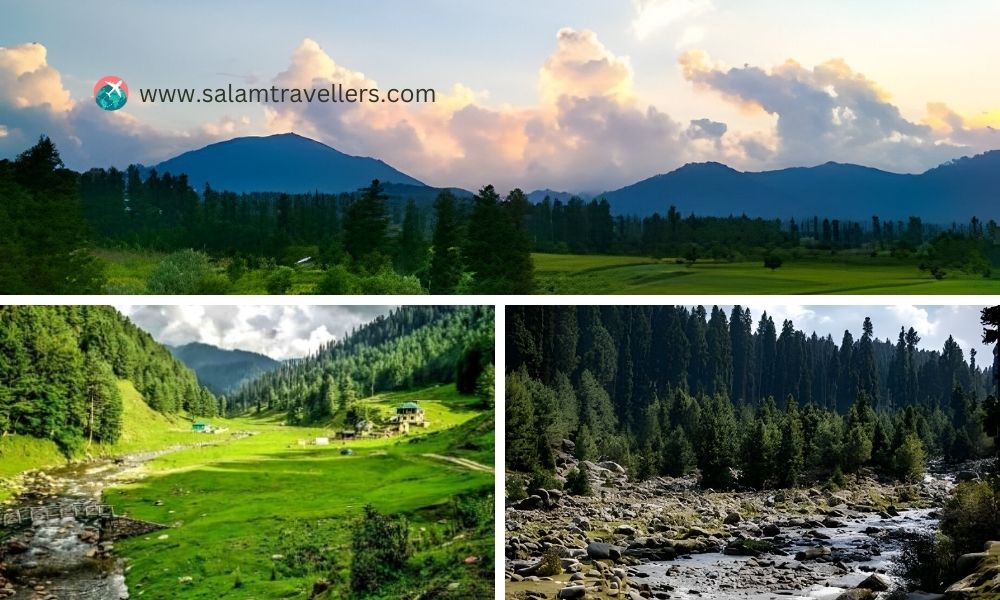
The Bodpathri Meadows and the Doodhpathri Trek require some planning and preparation to ensure a safe and enjoyable experience. Here are some critical and interesting points:
Best Time of Year
The best time to trek to Bodpathri Meadows is from June to September. This is when the weather is more stable and mild. Winters can be extremely cold, with heavy snowfall that makes the trek more difficult and potentially hazardous. Late spring or early autumn are also decent times, but be prepared for some residual winter conditions at higher elevations.
Permits
You will need to obtain a permit from the Kashmir Forest Department to access the Bodpathri Meadows trek. Permits help regulate the number of visitors to this delicate alpine region. The permit process involves submitting an application with details of your trek at least 15 days in advance.
Also read: What documents are required for Kashmir Trip?
Equipment
Proper trekking gear and equipment are essential for safety and comfort. Recommended items include:
- Sturdy hiking boots with good ankle support
- Warm layers and waterproof/windproof outer shell
- Sleeping bag and insulated pad
- Tent and camping supplies if doing an overnight trek
- Trekking poles for balance over steep and uneven terrain
- Daypack to carry food, water, layers, a first aid kit, etc.
- Headlamp or flashlight with spare batteries
- Navigation tools like map and compass
- Adequate food and water
- Emergency shelter (space blanket)
- Sun protection like hat, sunglasses, sunscreen
Being well-prepared with the right gear will ensure you can fully enjoy the stunning alpine scenery of the Bodpathri Meadows and the Doodhpathri Trek.
The Trekking Route
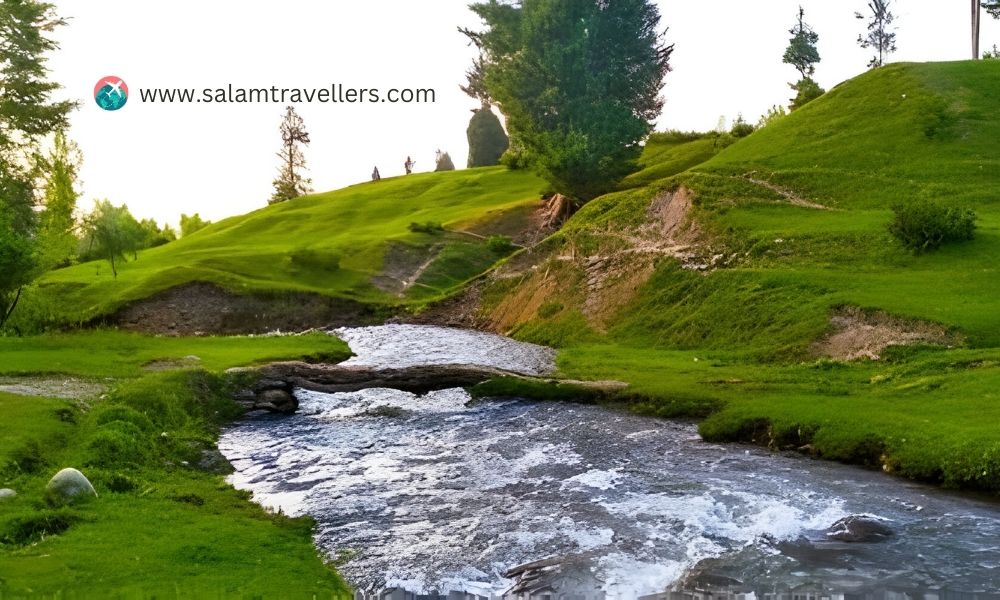
The Bodpathri Meadows and the Doodhpathri Trek follow a route through the lush green meadows and pine forests of Kashmir. The starting point of the trek is Bodpathri village, located about 65 km from Srinagar.
The first day of the trek involves a gradual ascent through thick forests of pine, fir, and rhododendron. Trekkers get their first glimpse of the snow-capped Pir Panjal range from Bodpathri village itself. The trail winds uphill and reaches the first campsite at Raiyen, set amidst a clearing with views of the mountains.
The second day is the most scenic part of the trek. The trail steeply climbs up above the tree line, opening up to spectacular views of frozen lakes, waterfalls, and flowering meadows. Trekkers pass the icy, cold waters of Sarbal Stream and climb up the boulder-strewn slope to reach the Bodpathri pass at 13,500 ft. The pass offers panoramic vistas of the Pir Panjal mountains shimmering in the distance.
Also read: Top Trekking Destinations in India for Adventure Lovers
Challenges Along the Way
The Bodpathri Meadows trek is considered a moderately difficult hike overall, but there are certain sections that present greater challenges for trekkers.
Difficult Sections
One of the most difficult parts of the trek is the steep ascent up to the Bodpathri Pass. This section involves a strenuous climb up rocky terrain. Trekkers need to be prepared for this long uphill hike that can take 3 to 4 hours to complete. Proper conditioning and frequent breaks are recommended.
Another tricky section is the path leading to the Bodpathri meadows, which is quite narrow at points. Caution needs to be exercised along the edges here, as there is a steep drop on one side. This path may be slippery if snow or rain has fallen recently.
Also read: 8 Things to Do in Pahalgam in the Winter
Potential Risks
Acute Mountain Sickness (AMS) is one of the major risks to be aware of at the high altitudes on this trek. Symptoms like headaches, nausea, and shortness of breath need to be monitored closely.
Trekkers must also be prepared for changing weather conditions in the mountains. Snowfall or rainfall can make the route slippery and dangerous. Proper windproof and waterproof gear is essential to staying safe.
Due to the remoteness of the trek, access to medical help is limited. Any injuries sustained along the way would need to be treated with the basic first aid available with the trek guide. Evacuation may be required in case of serious health issues.
Also read: 9 Best Adventure activities in Gulmarg
Flora and Fauna
The Bodpathri Meadows trek takes you through lush forests and alpine meadows that are home to rare flora and fascinating wildlife. Some of the rare flowers that can be spotted along the way include:
- Blue Poppies – These vibrant blue flowers bloom during the summer months and are native to the high-altitude Himalayas. They can often be seen along the edges of the meadows.
- Brahmakamal -Known as the Himalayan Night Flower, is a rare flower that only blooms at night. It has a lovely fragrance that fills the night air.
- Himalayan Edelweiss – This white flower is usually found above 3,000 meters in elevation. Its wooly leaves help protect it from the cold mountain air.
In terms of wildlife, some unique animals that trekkers may catch a glimpse of include:
- Himalayan Tahr – This wild mountain goat has thick, shaggy coats to protect it from the cold. They are excellent climbers and can be seen on steep mountain cliffs.
- Musk deer – A shy, gentle creature that inhabits the alpine forests. It’s most notable for having scent glands that produce musk.
- Himalayan Monal – The national bird of India, this pheasant has an iridescent plumage with bright blue feathers on the male. It’s usually seen foraging in groups on the forest floor.
- Snow leopard – If lucky, trekkers may spot this rare big cat, which is adapted to living in high, rugged mountain terrain. It has a thick, smoky gray coat with dark gray spots.
The trek through the Bodpathri Meadows provides a great chance to see rare flora and fauna that are unique to this high-altitude region of the Himalayas. The biodiversity along the route makes it an unforgettable trekking experience.
Also read: 19 Famous Things to Buy in Srinagar
Legacy and Impact
The Bodpathri Meadows and the Doodhpathri Trek have left a lasting legacy in the region. Even decades after the first explorers reached the summit, the trek remains immensely popular. During peak tourism season, hundreds of adventurers attempt the route each week. For many, completing the Bodpathri trek is a rite of passage and a source of pride.
The popularity of the route has also led to conservation efforts to protect the environment. In the 1990s, concerns emerged about the impact trekkers were having on the fragile alpine meadows. In response, the government implemented permits, quotas, and regulations to manage crowds and minimize environmental damage. They also worked with local villages to institute trail maintenance programs and waste management systems.
Today, the Bodpathri Meadows and the Doodhpathri Trek continue to inspire adventurers while maintaining the natural beauty that makes them so alluring. The careful balance of recreation and conservation is a model for sustainable tourism. The trek demonstrates that with proper management, we can enjoy nature’s wonders without destroying them. For this reason, the legacy of the Bodpathri route is one of both awe-inspiring wilderness and environmental responsibility.
Stay tuned for more adventure guides from Salam Travellers.

